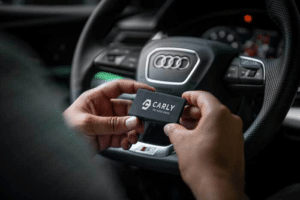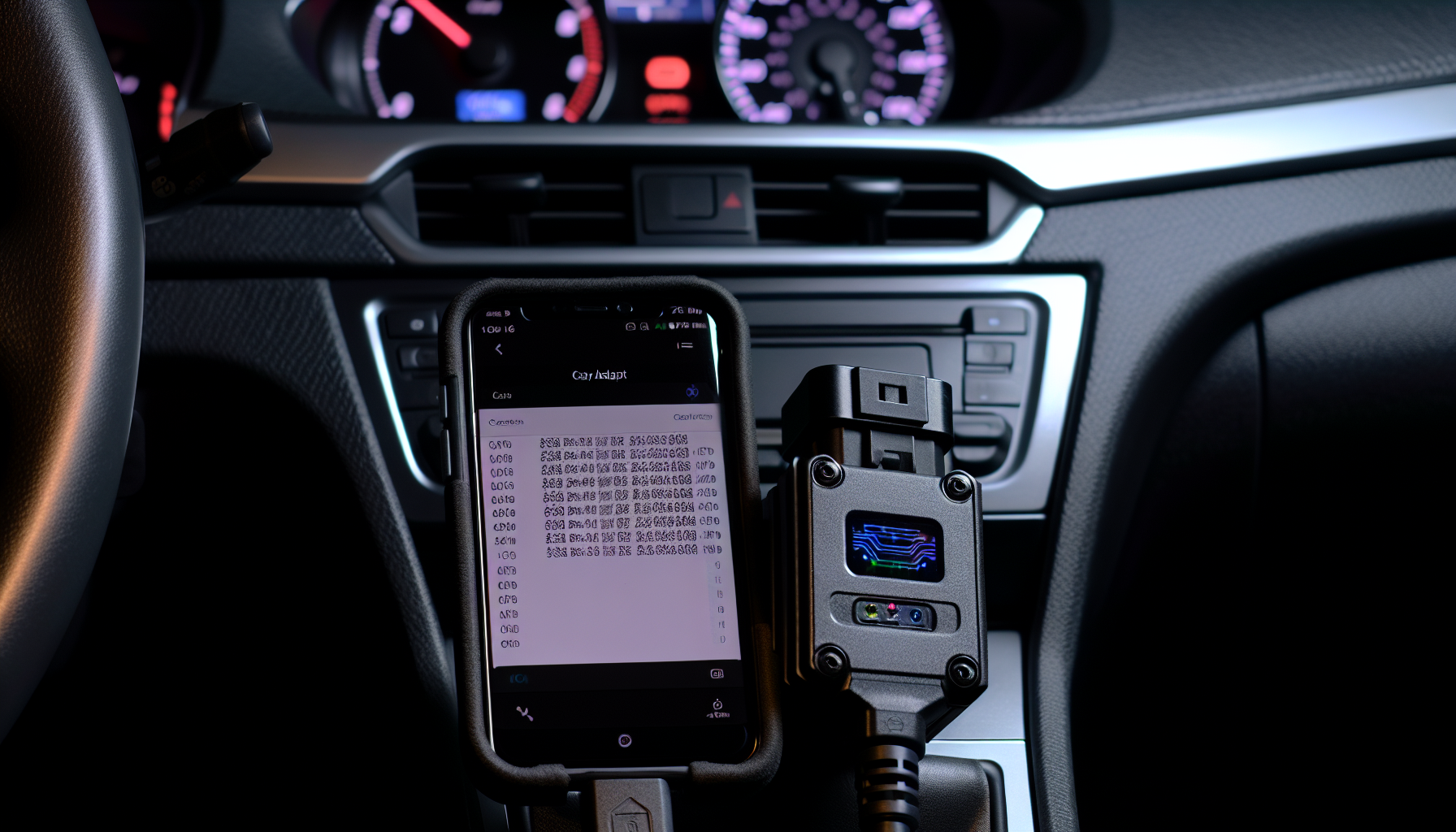Need to read engine codes but not sure where to start? This article delivers the essentials. You’ll learn how to interpret those flashing lights and alphanumeric signals from your dashboard, equipping you with the knowledge to diagnose issues swiftly and accurately. Straightforward and practical, get ready for a hands-on guide to understanding and acting on your engine’s signals.
Key Takeaways
- Engine codes are diagnostic trouble codes that indicate specific malfunctions within the vehicle’s systems, signaling problems via the engine control module to prevent more significant damage.
- The Carly Adapter stands out for reading engine codes, offering diagnostic capabilities, error code detection, and vehicle customization, and comes with a unique Smarth Mechanics feature for advanced insights.
- Understanding and addressing engine codes can involve DIY fixes for minor issues or professional help for more critical problems, and regular vehicle maintenance is essential to prevent engine code issues.
Understanding Engine Codes: The Basics

Engine codes, also known as diagnostic trouble codes, are essentially your car’s way of communicating potential issues. Stored by the vehicle’s on-board diagnostic system, these codes highlight specific malfunctions in the engine, transmission, fuel system, and other related components. Think of them as the car’s SOS signals, asking for help when something goes awry. By understanding the meaning of each diagnostic trouble code, you can quickly identify and address the issue at hand.
Five distinct characters make up each engine code. The initial character signifies the area of the vehicle encountering issues. For instance, the letter P typically denotes a malfunction within the powertrain system, while the letter C signifies a problem with the chassis, such as the brakes. Imagine these codes as a car’s language, with each character adding depth to what the vehicle is trying to communicate.
The Engine Control Module (ECM), or the powertrain control module, keeps a close eye on these codes. It plays the crucial role of regulating the essential components of the engine to ensure efficient operation. The ECM is like a vigilant guardian, continuously overseeing the engine’s functions and performance, striving to maintain optimal running conditions while detecting and logging any potential issues.
The Importance of Reading Engine Codes
To mitigate potential car damage, it’s vital to read engine codes. These codes enable mechanics to pinpoint problem areas in the vehicle and carry out essential repairs, consequently averting more significant damage and potential breakdowns. Imagine engine codes as a roadmap, leading you to the exact location of the issue, preventing unnecessary detours, and saving you from costly repairs.
These codes play a crucial role in diagnosing car issues, as they provide detailed information about the problems that activate the check engine light or other dashboard warning lights. This detailed information enables faster diagnosis and resolution of issues, including simple fixes like securing a gas cap and more complex repairs like addressing a faulty catalytic converter.
Moreover, interpreting engine codes brings a host of advantages, including:
- Potential cost savings on diagnostics and repairs
- Early identification of serious issues
- Compatibility with various vehicles
- Portability of most OBD readers
- Increased chances of performing DIY repairs like tightening a loose fuel tank cap.
Think of it as being fluent in your car’s language, offering you a deeper understanding and control over your vehicle systems’ health.
Carly Adapter: Your Best Option for Reading Engine Codes




Having understood the importance of engine codes, it’s time to introduce the Carly Adapter – a game-changer in the world of engine codes. This handy tool stands out as the best option for reading engine codes, thanks to its capability to conduct diagnostics and clear fault codes through the Carly app.
It’s like having a personal mechanic, helping you decode the complex language of your car’s engine.
Error Code Detection

Equipped with an error code detection function, the Carly Adapter allows users to conduct diagnostics using the adapter and its corresponding app. Upon completion of the diagnostics, users can utilize the app to access and eliminate fault codes present in their vehicle, including those related to the EGR system. It’s like a translator, decoding the error codes for you.
The Carly Adapter has the capability to:
- Identify a diverse range of OBD2 error codes, including those related to exhaust gas recirculation and the exhaust system
- Retrieve codes from all control units
- Showcase extensive vehicle compatibility
- Serve as a universal translator, speaking the language of various car brands and models.
The Carly Adapter not only identifies the codes but also demonstrates a high level of accuracy in detecting engine error codes. It ensures reliable diagnostics for car issues, such as detecting when there is too much fuel in the engine. It’s like a proficient linguist, accurately translating the codes into understandable language.
Customization and Scrambling
The Carly Adapter does more than merely read and interpret codes. It provides a range of customization options for reading engine codes, in addition to offering coding and personalization features for your vehicle. It’s like a toolbox, offering you the flexibility to customize your car’s settings and attributes.
Personalizing your vehicle’s settings with the Carly Adapter can improve your driving experience by allowing you to customize features to your specific preferences. It’s like a magic wand, allowing you to tweak and personalize your car’s features to suit your style and needs.
However, be aware that when using the Carly Adapter to modify a car’s default settings, all settings may revert to the default factory settings. It is advisable to ensure that there is a method to revert changes back to stock prior to workshop visits or for warranty considerations. It’s like a safety net, making sure you have a plan B in case you need to revert any changes.
Smarth Mechanics Functionality
The Carly Adapter is equipped with a unique feature called the Smarth Mechanics functionality. This feature provides exclusive access to component and schematic details, enabling visualization of the inner workings of the car. It’s like a crystal ball, offering you a glimpse into the future of your car’s health.
The Smarth Mechanics feature of Carly Adapter enables users to interpret fault codes, inspect components and schematics, and carry out repairs independently. Additionally, it incorporates an Intelligence feature that analyzes the error, reviews the historical occurrences of similar errors in comparable vehicles, and can forecast potential issues such as fault codes in different control units, component malfunctions, and potential repair solutions. It’s like a fortune teller, predicting potential issues before they occur.
The Smarth Mechanics functionality enhances responsiveness to potential problems by identifying and addressing them early, thereby preventing their escalation into bigger failures. It’s like a preventive medicine, nipping potential issues in the bud before they escalate.
Common Types of Engine Codes and Their Meanings

At first glance, engine codes might appear to be an enigma – a series of random letters and numbers. However, each code has a specific meaning, and understanding these codes can be key to diagnosing and fixing issues with your vehicle. Let’s demystify some of the common engine codes.
The prevalent categories of engine p codes encompass:
- Cylinder Misfire (P0300)
- Catalytic Converter Inefficiency (P0420, P0430) related to catalyst system efficiency
- Evaporative Emission (P0440, P0442, P0446, P0445)
- Coolant thermostat (P0128)
- System too lean (P0171, P0174)
Each of these codes point to a specific issue or malfunction in your vehicle, acting as a guide to what might be going wrong under the hood.
For instance, P0XXX engine codes are typically caused by a malfunctioning catalytic converter, defective oxygen sensor, and powertrain issues such as engine, transmission, and drivetrain accessories. A P1XXX engine code, on the other hand, typically represents a manufacturer-specific code that may not be related to emissions and may not trigger the check engine light. By understanding these codes, you can gain insights into what’s causing the problem and how to fix it.
Decoding Engine Codes: Steps and Tools
While deciphering engine codes may seem daunting initially, the right tools and steps can make it a breeze. One such tool is the Carly Adapter, which makes the process of decoding engine codes as easy as 1-2-3.
To decode engine codes using the Carly Adapter, you need to connect the Carly universal adapter to the vehicle’s OBD port and then utilize the Carly app to follow the provided instructions for reading and decoding the engine codes. It’s like a tutor, guiding you step by step through the process of decoding the engine codes.
But the Carly Adapter isn’t the only tool at your disposal. There are also other OBD-II code readers and advanced scan tools available that can assist in identifying vehicle issues. With these tools, you can become fluent in your car’s language, helping you keep your vehicle in top shape.
Troubleshooting Engine Codes: DIY Fixes and When to Call a Professional
After decoding the engine codes, you can move on to addressing the problem. Some engine code issues can be resolved with DIY fixes, while others may require professional help.
DIY fixes for engine codes include:
- Cleaning or replacing the Mass Airflow Sensor (MAF)
- Utilizing an OBD-II scanner to reset the check engine light
- Using the Carly Adapter to conduct comprehensive diagnostics of all installed control units in the vehicle, interpret fault codes, inspect components and schematics, and undertake manageable repairs
These steps can help you make an educated choice on whether to seek professional help or not.
However, there are certain indicators of significant engine issues that necessitate professional assistance, including:
- a failing battery
- a broken timing belt
- issues with the starter or ignition system
- the illumination of the check engine light
- loss of power
- a decrease in gas mileage
Knowing when to call a professional is key to preventing further damage and ensuring your car’s longevity.
Preventing Engine Code Issues: Tips for Maintaining Your Vehicle
As the old adage goes, ‘Prevention is better than cure’. This adage holds true when it comes to preventing engine code issues. Keeping your car running smoothly and avoiding engine code issues entail regular vehicle maintenance and utilization of tools like the Carly Adapter.
Factors contributing to engine code issues include:
- Oxygen sensor failure
- Loose fuel cap
- Catalytic converter failure
- Spark plug/ignition coil issues
- Bad spark plug
- Mass airflow sensor failure
- Damaged or broken thermostat
- Dirty or low coolant level
- Worn spark plugs
- Water damage to the ECU
Regular maintenance, such as inspecting and replacing worn-out parts and ensuring proper coolant levels, can help prevent these issues.
The Carly Adapter can be a valuable tool in your preventive maintenance regimen. It serves to monitor and clear fault codes, enabling timely intervention and the mitigation of engine code issues. So, keep your car healthy and prevent engine code issues with regular maintenance and the right tools.
In conclusion, understanding, decoding, and troubleshooting engine codes are vital aspects of vehicle maintenance. With tools like the Carly Adapter and regular maintenance, you can keep your car in optimal condition, preventing engine code issues, and ensuring a smooth and safe driving experience.
Frequently Asked Questions
How do you read a check engine code?
To read a check engine code, use an OBD scanner by connecting the scanner, turning the key, typing in your vehicle identification number, and locating and deciphering your codes. The first character indicates the system or area where the problem is located, and the second character signifies whether the issue is generic or manufacturer-specific.
Can you check engine codes without a code reader?
Yes, you can check engine codes without a code reader by using the odometer method. This method allows you to read a check engine light code without a scanner or code reader.
What are engine codes?
Engine codes, also called diagnostic trouble codes, are stored by a vehicle’s onboard diagnostic system to indicate specific issues or malfunctions in the engine, transmission, and fuel system. They help identify and diagnose problems with the vehicle’s components.
Why is it important to read engine codes?
It is important to read engine codes to diagnose vehicle issues, prevent potential car damage, and ensure optimal vehicle performance.

